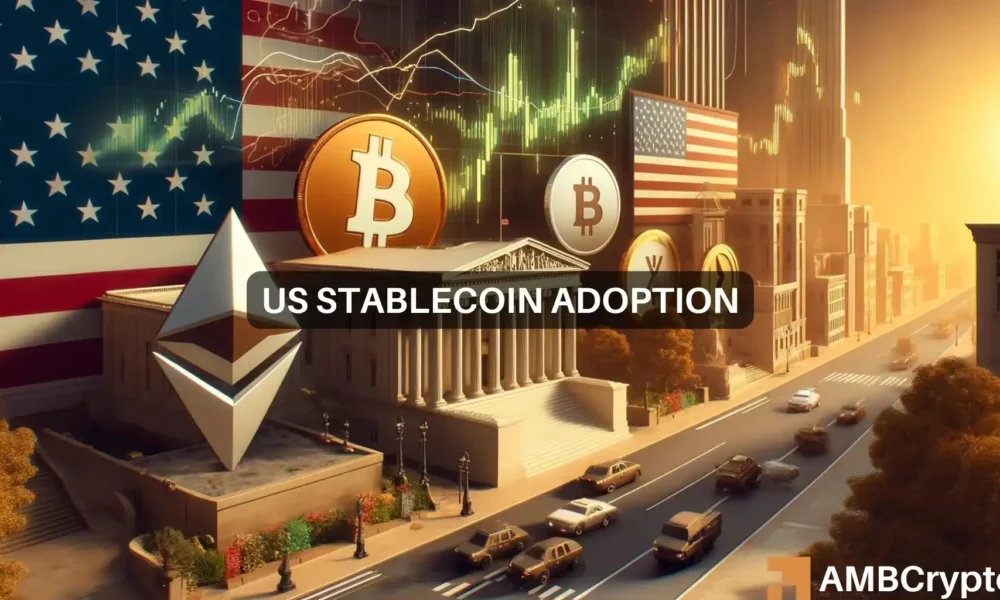Former CFTC executives share insights on U.S. lagging behind in stablecoin regulation

Stablecoin adoption grows, but complex US regulations hinder progress. Tether’s influence raises concerns about US regulatory and taxation disparity.
The United States economy has witnessed a sea change in sentiment regarding cryptocurrency. Starting with the approval of spot Bitcoin [BTC] ETFs, followed by the preliminary approval of Ethereum [ETH] ETFs, and now the crypto-influenced presidential election.
All these events highlight the US’s softening approach towards the industry. Amidst these dynamic changes, one question arises: How will these shifts affect stablecoins?
In the recent ‘Unchained’ podcast, former CFTC chief innovation officer Daniel Gorfine emphasized that U.S.-backed stablecoins offer a key opportunity for the U.S. to strengthen its financial dominance.
However, he noted that the U.S. has been slow to develop federal regulations for stablecoins. He said, “There are many global jurisdictions that are moving forward with rules and standards around stablecoins including dollar-backed stablecoins and that will happen before the US does anything at the federal level.”
Additionally, defying the risks cryptocurrencies bring to the financial system, Gorfine underlined that it’s Bitcoin that initiated discussions about new financial infrastructures, including stablecoins and CBDCs.
The need for stablecoins
In fact, since cryptocurrencies like Bitcoin are highly volatile, it’s stablecoins that come to the rescue. Their value remains stable as they are pegged to fiat currencies like the U.S. dollar, making them dependable digital assets.
Needless to say, the growing adoption of these coins is evident as big industry players like Stripe and PayPal have started accepting stablecoins, such as USDC, for mainstream payment functions.
Adding to the fray, Former CFTC chairman Chris Giancarlo in the same conversation noted, “I find stablecoins to be potentially a great way to satisfy an unmet global demand for dollar exposure.”
These discussions emphasize stablecoins’ capacity to shake up traditional payments and protect the US dollar’s global standing.
However, if we look at the flip side of the story, the complex US regulatory landscape presents hurdles for stablecoin expansion.
US’s regulatory framework in question
Thus, by proposing the use of the dual banking system model, which involves both state and federal regulatory oversight, Gorfine added, “This shouldn’t be as complicated as we’re making it…I think we could create coherent oversight of stable coin issuers quite readily.”
While countries like Singapore efficiently license US dollar-based stablecoin issuers, the US still struggles with establishing a coherent regulatory framework for its own currency.
Source link
#U.S #stablecoin #regulation #CFTC #execs #weigh





